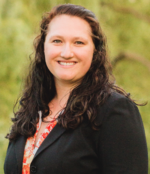Difference between revisions of "Development of SEBoK v. 2.6"
m (Text replacement - "<center>'''SEBoK v. 2.8, released 31 May 2023'''</center>" to "<center>'''SEBoK v. 2.9, released 13 November 2023'''</center>") |
m (Text replacement - "SEBoK v. 2.9, released 13 November 2023" to "SEBoK v. 2.9, released 20 November 2023") |
||
| Line 259: | Line 259: | ||
---- | ---- | ||
| − | <center>'''SEBoK v. 2.9, released | + | <center>'''SEBoK v. 2.9, released 20 November 2023'''</center> |
Revision as of 22:30, 18 November 2023
This version of the SEBoK was released 20 May 2022. This release included:
- Parts 2 and 3 - the foundations of systems engineering and systems engineering approaches, methods, processes, and tools have been substantially rearranged. This update reflects:
- Incorporation of more information on Model-Based Systems Engineering (MBSE) and Digital Engineering
- Refinement of systems science foundations of systems engineering
- Addition of new materials in Part 3 such as agile approaches.
- Part 6 - there are many new articles and updates to existing articles on the relationships between systems engineering and other disciplines.
- New Editor's Corner - the Editor's Corner is focused on the current and emerging trends in systems engineering. Check it out for our Editor in Chief's current thoughts on the metaverse and the impact on systems.
- New sponsors and sponsorship packages - you will notice a number of new sponsors and updates to the sponsorship packages available. Please join us in thanking our sponsors for their support of the SEBoK!
- The SEBoK user community has provided dozens of comments - from minor corrections to recommendations on terminology and reference updates to broad discussions about the transformation of the discipline. The Editorial Board has addressed all resolved comments in the wiki and will carry forward any comments still under discussion in version 2.6.
Governing Board for version 2.6
The three SEBoK steward organizations – the International Council on Systems Engineering (INCOSE), the Institute of Electrical and Electronics Engineers Systems Council (IEEE-SYSC), and Stevens Institute of Technology – provide the primary funding and resources needed to sustain and evolve the SEBoK and make it available as a free and open resource to all. The stewards appoint the BKCASE Governing Board to be their primary agents to oversee and guide the SEBoK. The stewards appoint the SEBoK Editor in Chief to manage the SEBoK and oversee the Editorial Board.
The BKCASE Governing Board included:
- Representing the The International Council on Systems Engineering (INCOSE)
- Art Pyster (Governing Board Chair), Emma Sparks
- Representing the Systems Engineering Research Center (SERC)
- Thomas McDermott, Cihan Dagli
- Representing the IEEE Systems Council (IEEE-SYSC)
- Stephanie White, Bob Rassa
Past governors include Andy Chen, Richard Fairley, Kevin Forsberg, Paul Frenz, Richard Hilliard, John Keppler, Bill Miller, David Newbern, Ken Nidiffer, Dave Olwell, Massood Towhidnejad, Jon Wade, David Walden, and Courtney Wright. The governors would especially like to acknowledge Andy Chen and Rich Hilliard, IEEE Computer Society, who were instrumental in helping the governors to work within the IEEE CS structure and who supported the SEBoK transition to the IEEE Systems Council.
SEBoK v. 2.6 Editorial Board
The SEBoK Editorial Board is chaired by the Editor in Chief, who provides the strategic vision for the SEBoK. The EIC is supported by a group of Editors, each of whom are responsible for a specific aspect of the SEBoK. The EIC and Editorial Board are supported by the Managing Editor, who handles all day-to-day operations. The EIC, Managing Editor, and Editorial Board are supported by a Student Editor, Madeline Haas, whose hard work and dedication are greatly appreciated.
| SEBoK Editor in Chief | |
|---|---|
|
University of South Alabama Responsible for the appointment of SEBoK Editors and for the strategic direction and overall quality and coherence of the SEBoK. | |
| SEBoK Managing Editor | |
|---|---|
|
Systems Engineering Research Center nicole.hutchison@stevens.edu or emtnicole@gmail.com Responsible for the the day-to-day operations of the SEBoK and supports the Editor in Chief. | |
Each Editor has his/her area(s) of responsibility, or shared responsibility, highlighted in the table below.
| SEBoK Part 1: SEBoK Introduction |
|---|
University of South Alabama rcloutier@southalabama.edu |
| SEBoK Part 2: Foundations of Systems Engineering | |
|---|---|
Airbus and International Society for the System Sciences Responsible for the System Science Foundations of System Engineering. | |
| Assistant Editor: Dov Dori
Massachusetts Institute of Technology (USA) and Technion Israel Institute of Technology (Israel) Responsible for the Representing Systems with Models knowledge area |
Assistant Editor: Duane Hybertson
MITRE (USA) Jointly responsible for the Systems Fundamentals, Systems Science and Systems Thinking knowledge areas. |
| Assistant Editor: Peter Tuddenham
College of Exploration (USA) |
Assistant Editor: Cihan Dagli
Missouri University of Science & Technology (USA) Responsible for the Systems Approach Applied to Engineered Systems knowledge areas. |
| SEBoK Part 3: Systems Engineering and Management | |
|---|---|
JTConsulting
| |
| Assistant Editor: Phyllis Marbach
INCOSE LA [USA] |
Assistant Editor:
|
| Assistant Editor: | Assistant Editor: |
| Assistant Editor: | Assistant Editor: |
| SEBoK Part 4: Applications of Systems Engineering | |
|---|---|
Systems Engineering Research Center (SERC) tmcdermo@stevens.edu | |
| Assistant Editor: Javier Calvo-Amodio
Oregon State University |
Assistant Editor: Judith Dahmann
MITRE Corporation (USA) Jointly responsible for Product Systems Engineering and Systems of Systems (SoS) knowledge areas. |
| Assistant Editor: Michael Henshaw
Loughborough University (UK) Jointly responsible for Product Systems Engineering and Systems of Systems (SoS) knowledge areas | |
| SEBoK Part 5: Enabling Systems Engineering | |
|---|---|
Systems Engineering Research Center nicole.hutchison@stevens.edu | |
| Assistant Editor: Emma Sparks
Cranfield University Jointly responsible for the Enabling Individuals and Enabling Teams knowledge areas. |
Assistant Editor: Rick Hefner
California Institute of Technology |
| Assistant Editor: Bernardo Delicado
INCOSE/Indra Sistemas | |
| SEBoK Part 6: Related Disciplines | |
|---|---|
George Mason University (USA) apyster@gmu.edu | |
| SEBoK Part 7: Systems Engineering Implementation Examples |
|---|
FAA Technical Center
|
| SEBoK Part 8: Emerging Knowledge |
|---|
Purdue University |
| Assistant Editor: Ha Phuong Le
Purdue University |
Student Editor
Madeline Haas, a student at George Mason University, is currently supporting the SEBoK and we gratefully acknowledge her exemplary efforts. Ms. Haas has also taken responsibility for managing the Emerging Research knowledge area of the SEBoK. The EIC and Managing Editor are very proud of the work Madeline has done and look forward to continuing to work with her.
Editor's Corner
The Editor's Corner is a space for the Editor in Chief to provide insights or perspective on relevant topics. The below is an archived copy of the article written by v. 2.5 EIC, Dr. Rob Cloutier.
Rob Cloutier: Musings on the Metaverse (continued)
I would like to continue my discussion from the previous SEBoK release on a Metaverse for systems engineering. In the six months that have elapse since I last wrote about this, the metaverse community has continued to expand. The Sandbox Metaverse and Decentraland are both built on the Ethereum blockchain. Each has their own cryptocurrency which is used to buy objects and services. And each has their own DAO – decentralized autonomous organization for governance. There are a number of others that continue to emerge as Web 3.0 continues to gain acceptance.
Recently, Lippert, et al. presented a systems engineering metaverse framework at an IEEE conference. A three-layer topology was proposed. First, there is a technology layer comprising tools, computation, and blockchain. The communication layer contains the content creation interface, a digital twin, and the user experience. Finally, the environment layer is made up of artificial intelligence, economics code, and user generated content (UGC)[1]
Does all of this sound like jibberish to you? I can assure you the younger members of INCOSE, IEEE, and IISE understand every word of what I just wrote. I am suggesting that professional societies and engineering communities need to get out in front of this. It is quickly becoming the fusion of the next generation of the Internet, artificial intelligence, blockchains, and social media with the ability to host digital twins, transact business, and facilitate collaborations.
There are a number of issues we should be thinking about. How do we write requirements for a metaverse? What should the architecture look like? How do we V&V a metaverse? Then, there is blockchain technology. While the notion of blockchain is most commonly attached to cryptocurrency, it is also being implemented as a ledger for real estate transaction, an archive for important documents, and throughout the many steps and types of supply chains. It is being looked at in areas of managing intellectual property, cybersecurity and health care and records. These are all the challenging issues of which we as systems engineers should be involved.
It is a brave new world, as systems engineers, we need to be part of the solution. We cannot do that if we do not even understand the technology.
What do you think? Can this community become the catalyst for change? Can we define what a Metaverse for Systems Engineering could become? I would love to hear your thoughts. Please drop a comment using the “Add comment” feature at the bottom of this page. The “Add comment” feature does not capture who is posting the comment. So, if you want a more vibrant interaction with others, please consider including your name and email with your comment. (We recommend using [at] and [dot] if you post your email address.)
Alternately, if you want to initiate a longer conversation with me, drop me a note at rcloutier[at]southalabama[dot]edu. Please put “SE Metaverse” in the subject line to help me sort the mail easier.
With all of that in mind, I hope you enjoy this latest release of the SEBoK.
[1] Lippert, K., Khan, M.N.R., Rabbi, M. M., Dutta, A., and Cloutier, R. J. (2021). A Framework of Metaverse for Systems Engineering. 2021 IEEE International Conference on Signal Processing, Information, Communication and Systems (SPICSCON), Dhaka, Bangladesh

